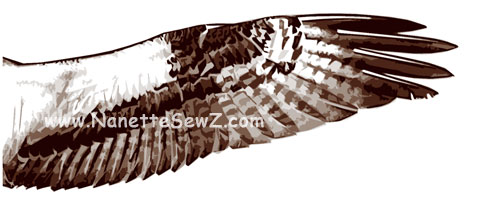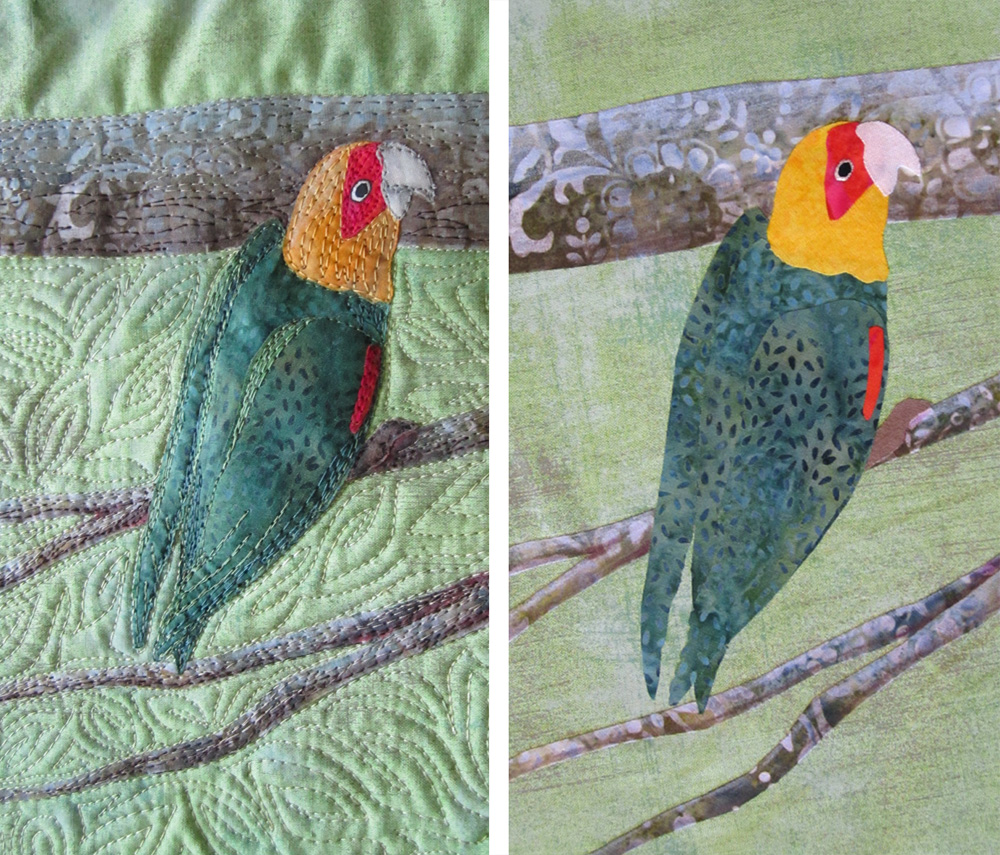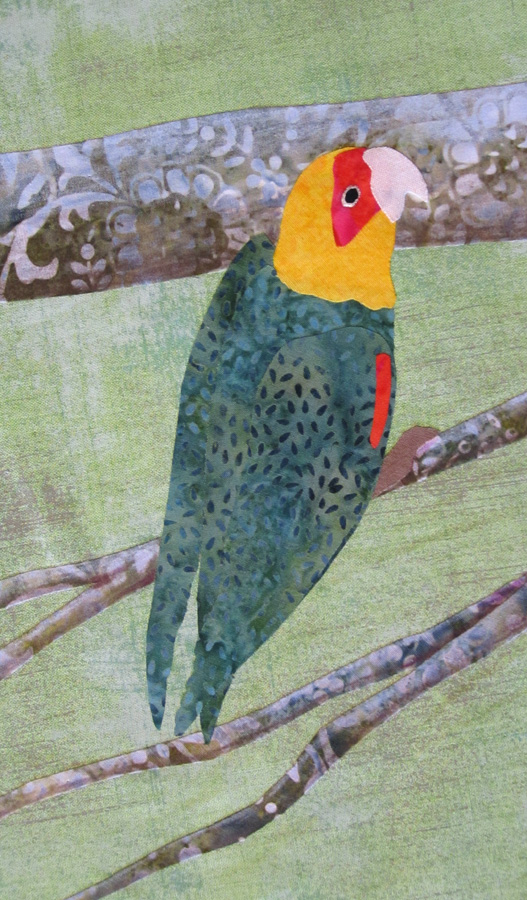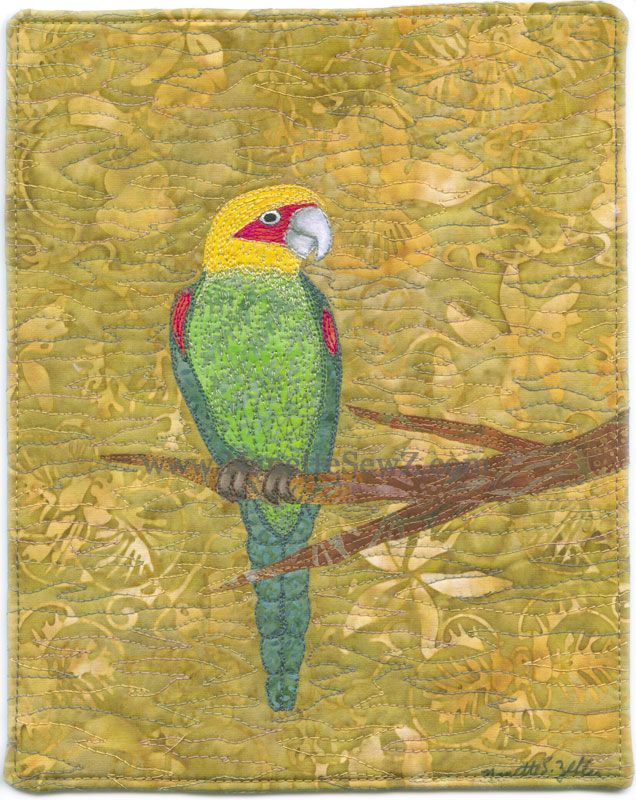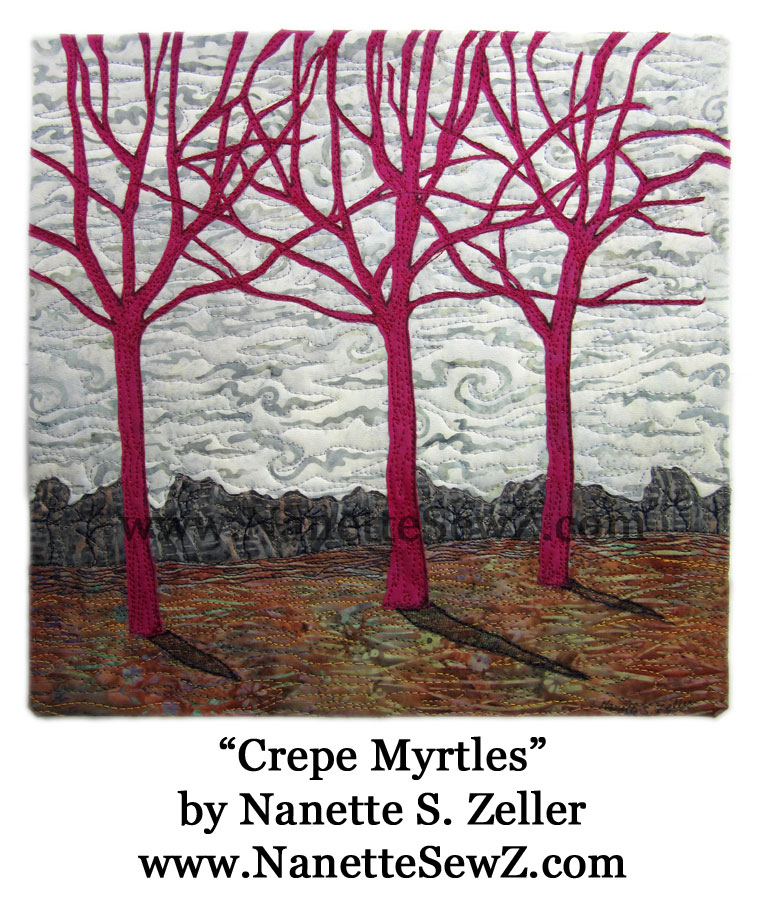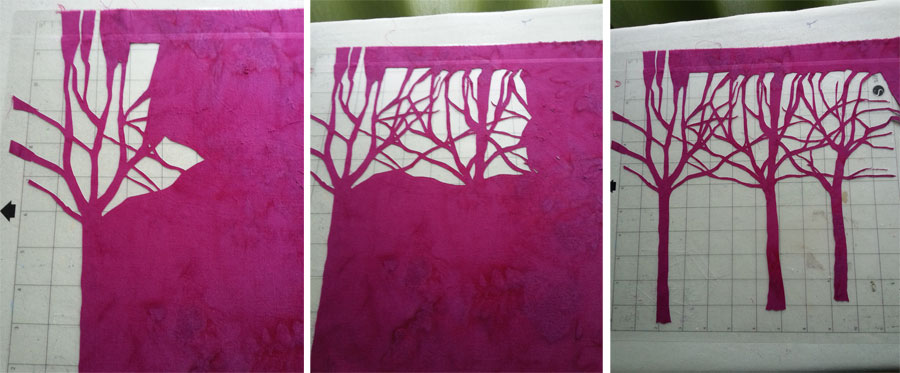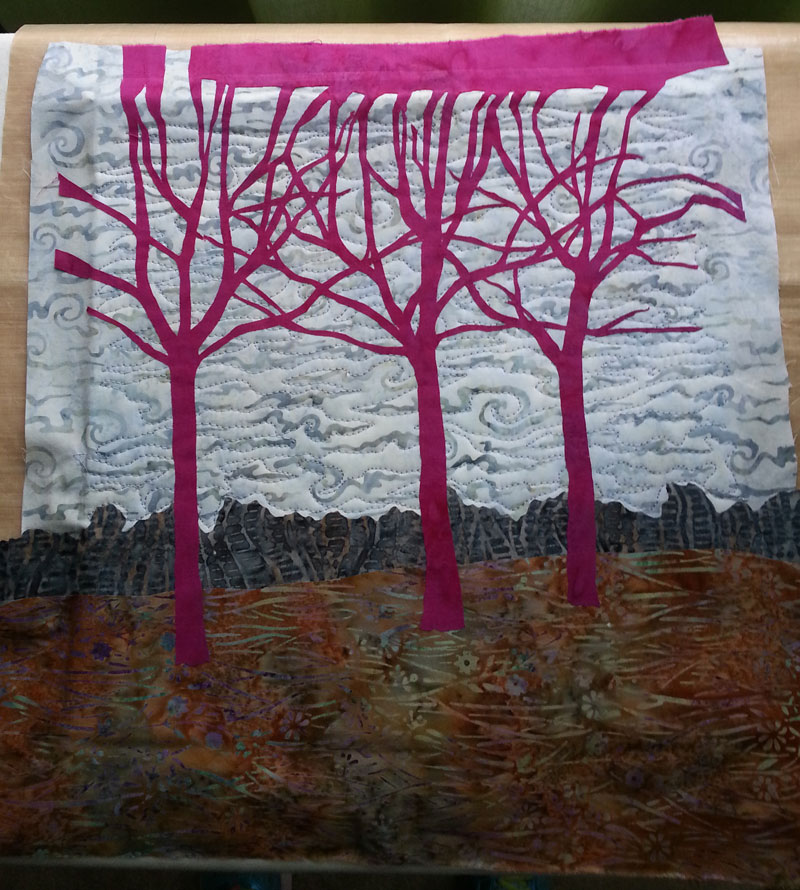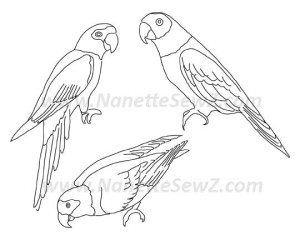There’s a new quilt on my design wall this week. I started it a while back, but decided to abandon it until I got the Sweet16 up and running. After finishing the Carolina Parakeets, I believe I’m ready for this one now. I estimate that it will have a finished size somewhere arou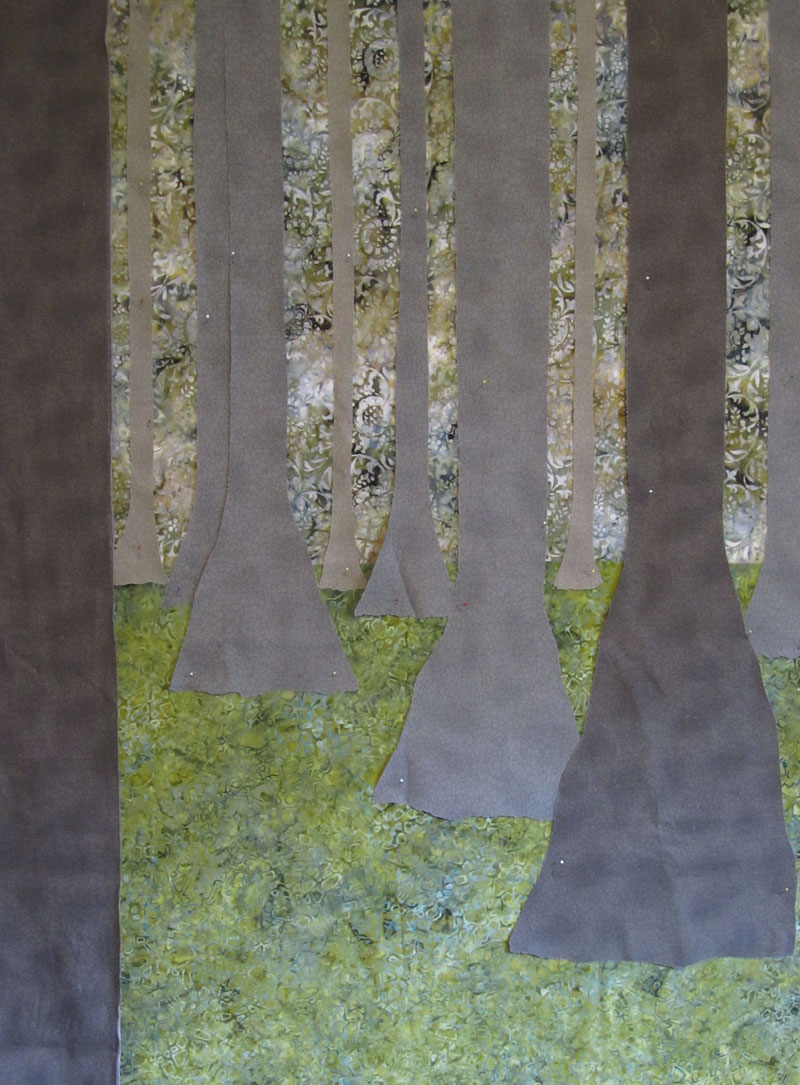 nd 40″ x 60″.
nd 40″ x 60″.
All the fabric trees have been cut and ready to fuse to the background. After the trees are in place, I’m adding depth and 3-D shading using tulle (aka bridal veil), a trick I learned early in my quilting career.
I used to work full-time as a freelance technical editor. A lot of the tools I have in my “tool box” were gleaned from editing other people’s books. The very first book I edited was Joyce Becker’s Beautifully Embellished Landscapes. During the editing process, I had to read through Joyce’s book several times. With that much review, stuff is bound to stick in your head.
Tulle is a wonderful medium to create transparent shading effects on fabric. If you need to make something in your landscape look darker (or lighter) , just sew a layer of dark (or light) colored tulle on top of the fabric. That’s what I need to do next; I only have 3 shades of tree fabric and need to add some dimension to the scene.
In real life, the color value of a landscape scene gets lighter the farther it is from you. For example, when you see mountains, the peaks farthest away from you are usually lighter (smokey looking) compared to those in the foreground. When you’re looking at a landscape in real life, it’s the light from the sky and sun that creates this faded coloration. On the other hand, when you’re in the midst of a dense forest, the vegetation adds shadows and darkens the background. So do I want my forest to have light coming from the horizon or appear dense with vegetation?
